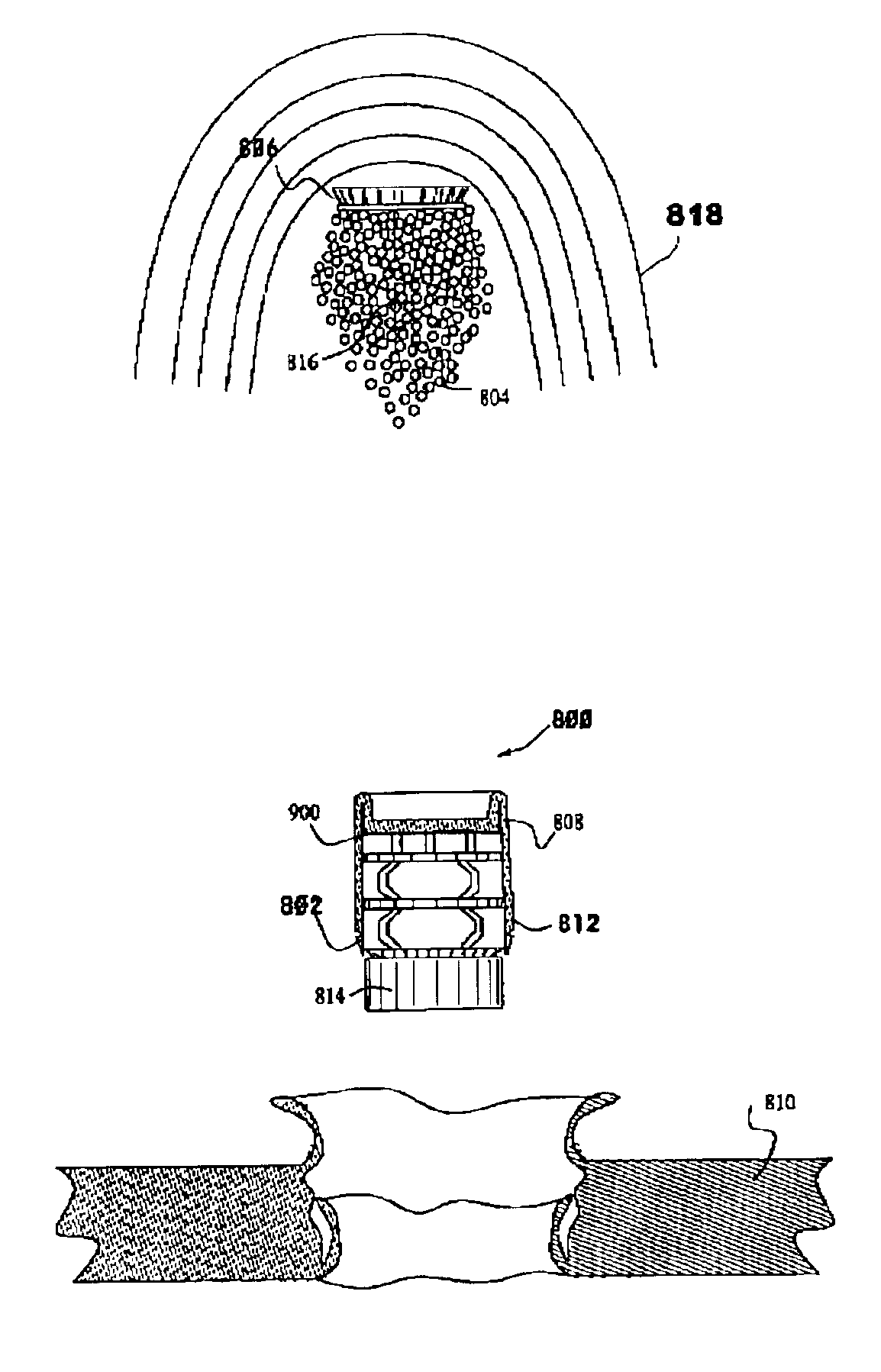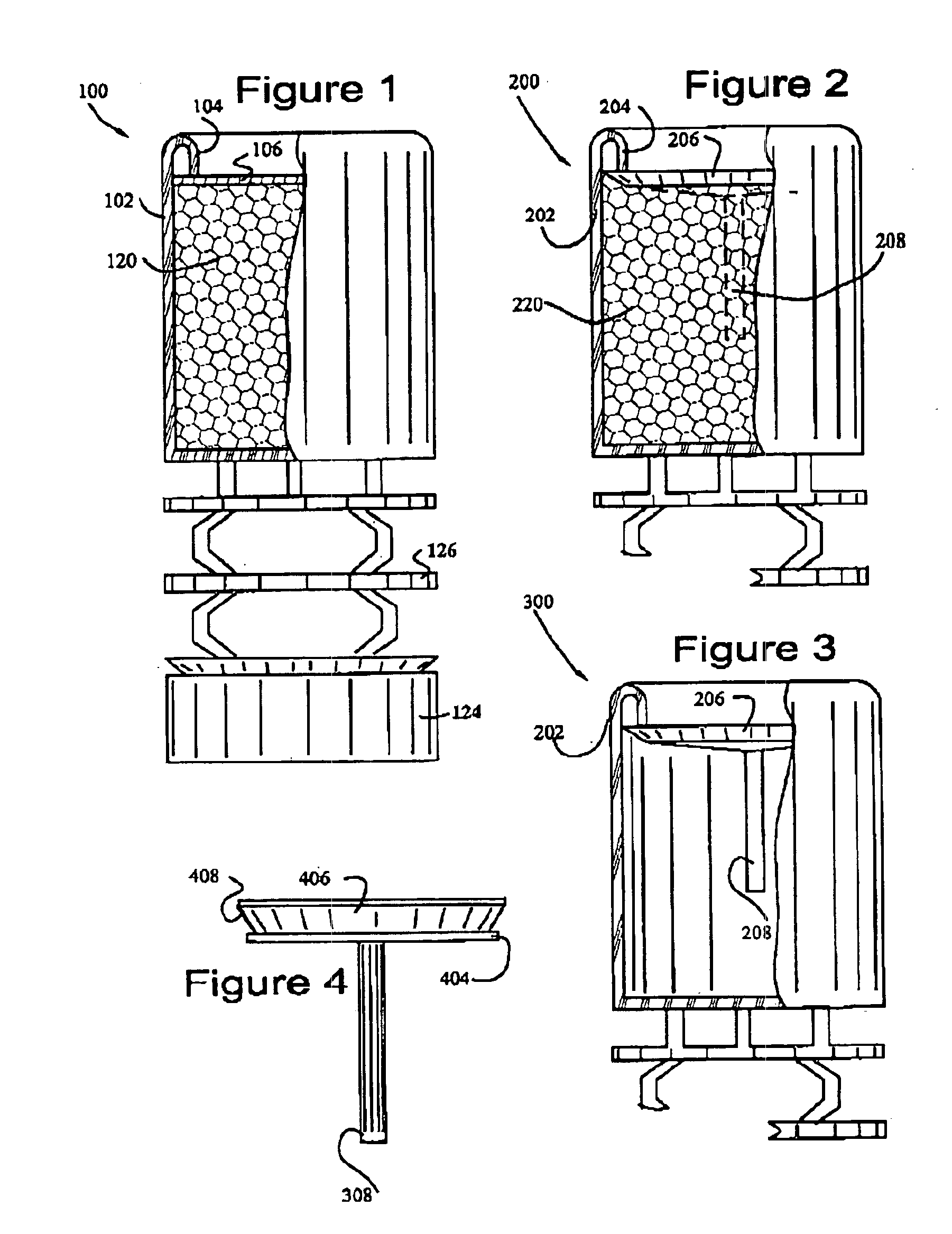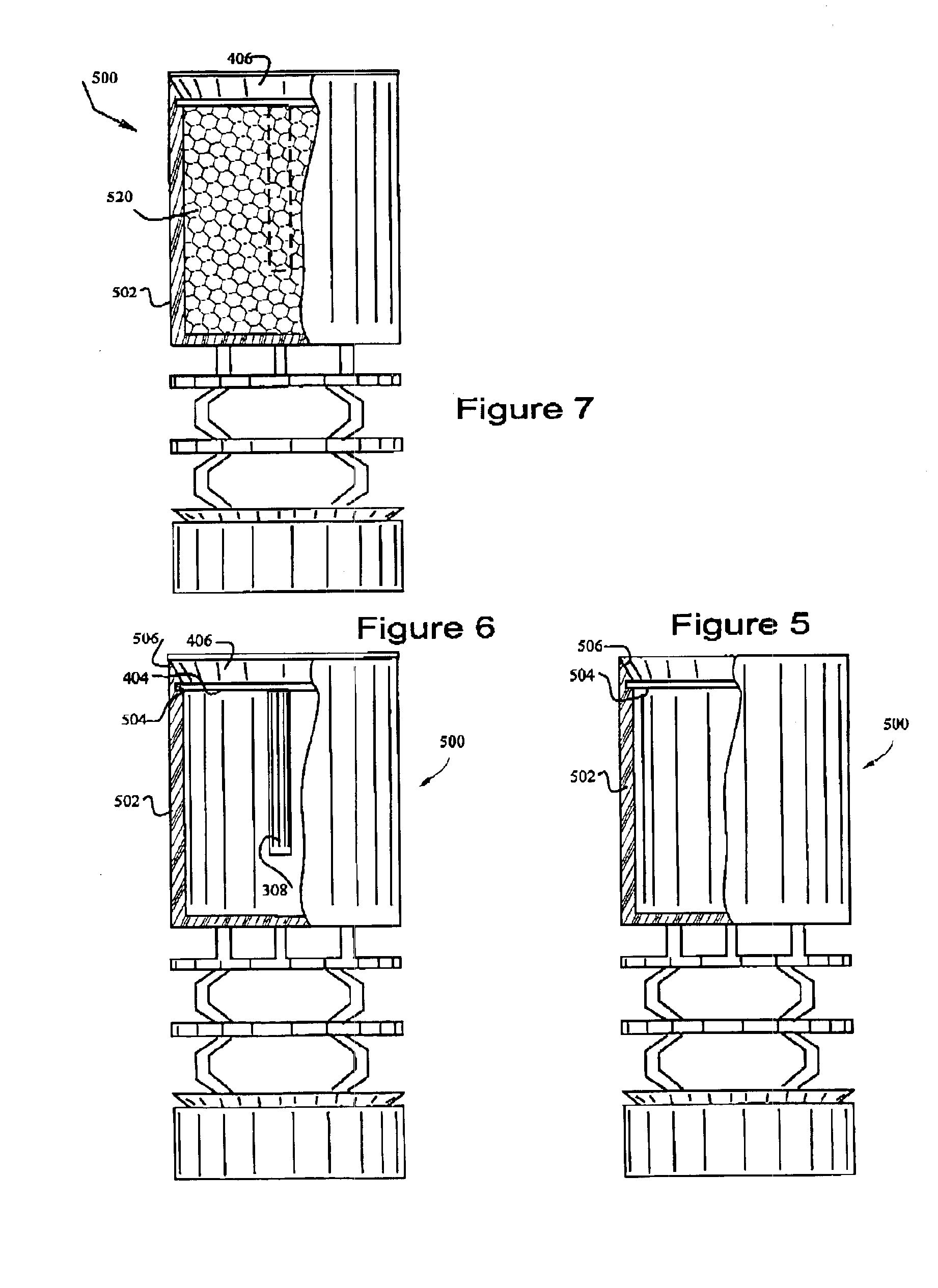Controlled energy release projectile
a projectile and energy release technology, applied in the field of fragmentation type projectiles, can solve the problems of ineffective hunting projectiles, ineffective inadvertent injuries and deaths, and excessive destructive capabilities that have always presented liability problems,
- Summary
- Abstract
- Description
- Claims
- Application Information
AI Technical Summary
Benefits of technology
Problems solved by technology
Method used
Image
Examples
example i
[0103]The target was a residential type interior partition wall with a single layer of one half inch thick (½″) gypsum board on each side of a standard stud wall. The projectile was a shell having a mass of 7000 small pellets as core particles confined within a hull. The leading, open end of the hull, was closed by a thumbtack like actuator. During the penetration of the wall the hull peeled back, releasing the actuator and the mass of particles. For a distance of about three feet, the mass of particles traveled in a confined zone, as an expanding but unified mass of particles. The mass of core particles had a center core of dense packed particles with a spreading fringe of individual particles. At the end of three (3) feet, the particles had a radial dispersion diameter of about two inches. The pressure wave then dissipated to the point where drag set in and at a distance of about seven (7) to about ten (10) feet, the intermediate zone of the pellets expanded to form a large diamet...
example ii
[0104]The targets were seventeen (17) to eighteen (18) pound whole pork shoulders. A one-inch thick plywood sheet barrier was placed 36 inches behind the shoulder directly within the line of fire. The aim point was the heavy muscled area just over the shoulder joint itself and would create a projectile path from the outside of the shoulder toward where the shoulder would attach to the animal.
[0105]Using several different types of conventional ammunition, the projectiles passed through each pork shoulder and on through the plywood barrier.
[0106]In the test firing using the disclosed projectile the one inch plywood sheet barrier was replaced with a ½ inch thick piece of sheetrock. It was determined that if the projectile, or any part of the pork shoulder penetrated the sheetrock, that configuration of the projectile would be considered a failure.
[0107]Using the projectile as disclosed herein, the shoulder joint was cleanly separated and blew through a large hole in the back of the sho...
example iii
[0109]For example, in the case of a steel drum filled with water and having a 10 inch diameter and 18 inch high, of a fairly high gauge steel, the impact of the projectile of the present invention rips out the front but does not effect the back wall. There is a rebound of the pressure wave, that is, a water hammer effect.
[0110]The rebound hydraulic shock can be four times the impact of the initial pressure wave. The present invention projectile, unlike prior art projectiles, produced large bulges at the side and top of the steel drum, but no exit hole. The shock wave does massive damage, and the blunter the nose and the faster the expansion, the greater the shock wave.
[0111]A penetrating bullet takes the shock wave with it through the exit opening. A full metal jacket projectile has a very high penetration force and will pass cleanly the same type of container, creating minimal budlging and only a small entranced and exit hole. Thus, the diameter of the trauma zone is very small. In...
PUM
 Login to view more
Login to view more Abstract
Description
Claims
Application Information
 Login to view more
Login to view more - R&D Engineer
- R&D Manager
- IP Professional
- Industry Leading Data Capabilities
- Powerful AI technology
- Patent DNA Extraction
Browse by: Latest US Patents, China's latest patents, Technical Efficacy Thesaurus, Application Domain, Technology Topic.
© 2024 PatSnap. All rights reserved.Legal|Privacy policy|Modern Slavery Act Transparency Statement|Sitemap



